How the works of a 19th century
painter awakened
courage. February
2007
It began
with Austin Hollow, a little study
I first painted June 8, 2006 and have been growing fond of.
As
I have previously written, artists have degrees of confidence in
what they are able to describe with paint.
Confidence grows the more
you paint, the more you discern, that is, to select which
colors, which
strokes,
which
details you want to INCLUDE, which also means there will be colors and
details you purposefully
choose to LEAVE OUT. When a piece
is done out in nature, the selection
process is not easy.Tons of
information are crying out for
your attention. Not all of it
can go into your painting. Something has to be left out.
Austin
Hollow has trees, ground
cover, patches of sky, an orange gate, an overgrown embankment,
and a strong diagonal working its
way through the picture.
It is a good start, but I want to grow in my understanding.
Working
with "the color of dirt in the shade" is a problem I want to solve.
Being able "to suggest particular plants
with dabs and
dots" is another problem I want to solve. The sky is generally blue,
but certain kinds
of blue go better
with all the other colors. It may be a
lighter blue, a purple blue, a
green
blue, or a cream color instead of blue.
Think of a bright orange sunset. That
sky may not have
a blue in it, even though we tend to think the sky must be blue.
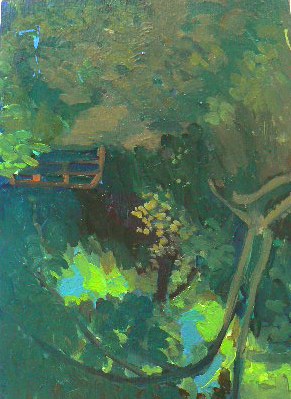
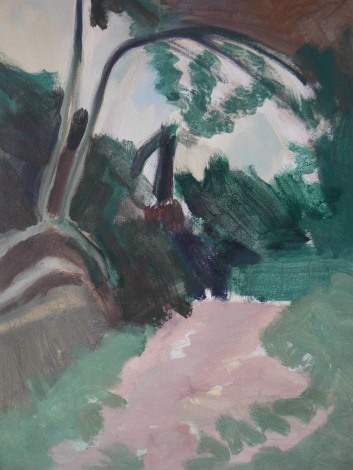
7" x 10" original upside
down
36" x 18" on canvas stage 1
One
way to grow and solve composition problems is to paint the image upside
down.
(Composition means where shapes and colors are placed in the picture.
"Places everybody!!")
When you
work from an upside down image you are able to sketch in
shapes and colors without being
so attached
to them.
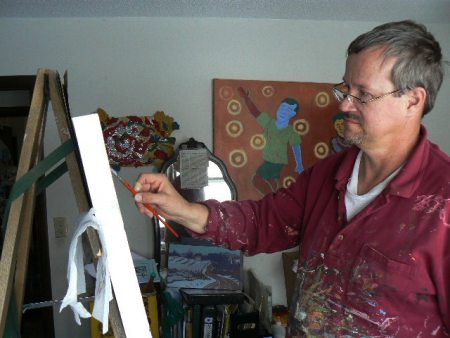
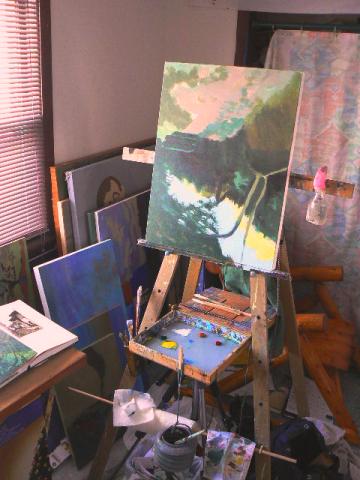
So, I am working inside my
painting space.
You can see the image being
Smooth jazz
playing on the tape player.
translated
onto
a stretched 18" x 24" canvas.
My
EasyL portable palette box on the tripod
sits beneath my bigger studio easel.
Brushes hang in a holder at one side.
The water container hangs in front.
Paper towels are ready to wipe the
palette scraper or clean out brushes.
A
water
bottle (pink) hangs on the right
support arm, with which I spritz my
palette
to keep the colors moist and usable.
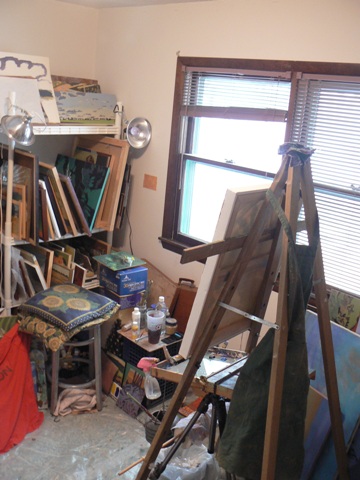

The rest
of my painting space is neatly organized.
At some
point I do a series of Corot
studies in my 11" x 14" sketchbook. By forcing myself to describe
his works in paint, I become familiar with dirt colors, quarry rock
colors, rocks in shadow colors. It is the
"doing of it" that gets his color choices into my head, into the
mainframe, so to speak.
A friend, Louis Webber, lent me a
479 page book on Jean-Baptiste-Camille Corot (1796-1875).
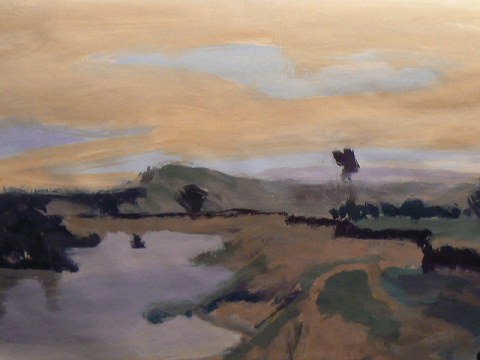
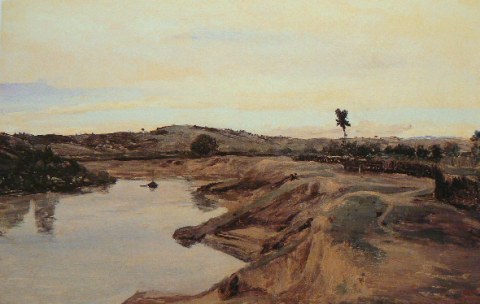
11"
x 14" Study of Corot's "La
Promenade"
"La
Promenade du
Poussin" by Jean-Baptiste-Camille
Corot
January
13, 2007
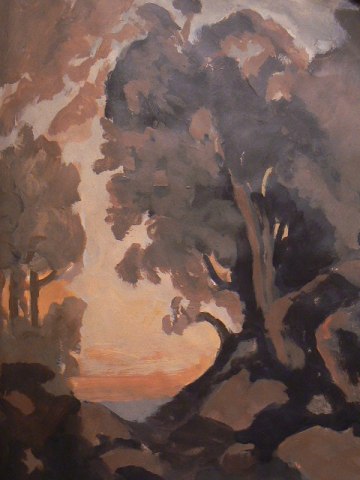
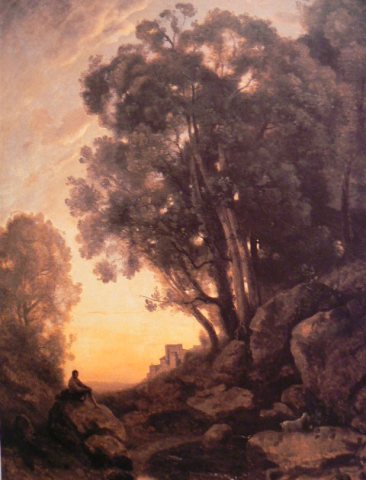
11"
x 14" Study of
Corot's
"Le
Chevrier italien (effet du
soir)"
by Corot
"Le
Chevrier italien (effet du soir)"
January13, 2007
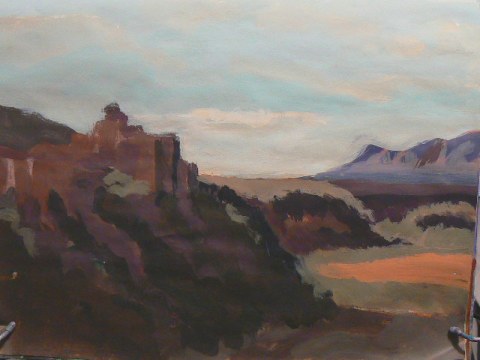
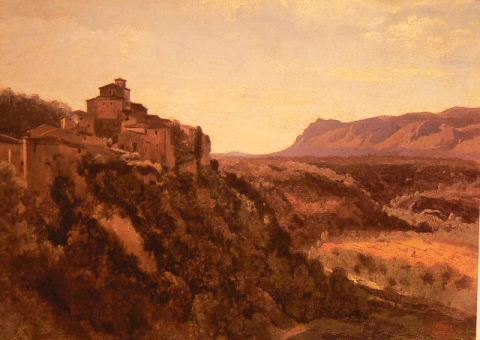
11" x 14" Study of
Corot's
"Papigno: Building overlooking the Valley" by Corot
"Papigno: Building overlooking the Valley"
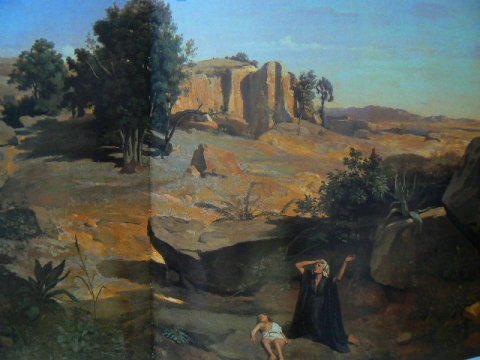
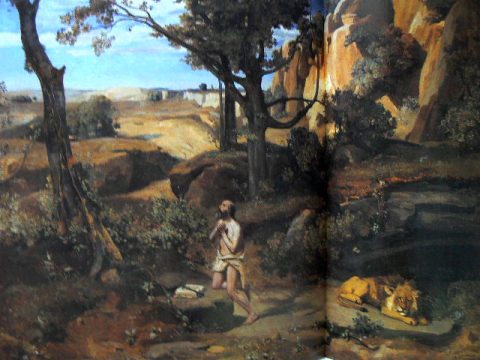
"Hagar In The Wilderness" by
Corot
"Saint Jerome" by Corot
(colors of dirt and rock)
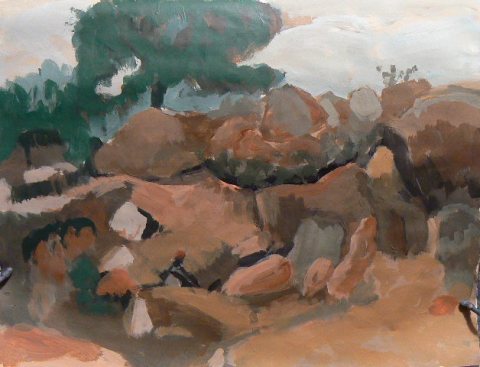
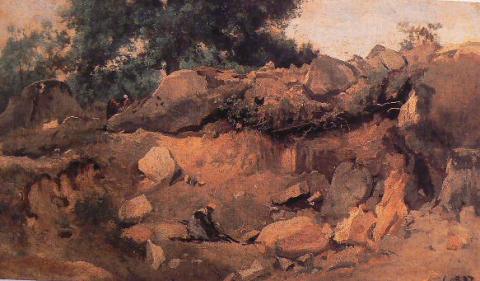
11"
x 14" Study of
Corot's
"Quarry
of the Chaise-Marie at
Fountainbleu" by Corot
"Quarry of the Chaise-Marie at
Fountainbleu"
January 14, 2007
Q: Look at Corot's original
paintings above.
What
color
problems did I choose to
solve?
What parts of my
study look like Corot's work?
What details
does he do better? (for example, tree leaves, yeah and what else?)
As I do " the studies," my
apprehension melts, and I consider new problems to solve.
I pull out an Arizona
Highways magazine photo I admire, have wanted to do sometime, but just
had not felt ready to tackle.
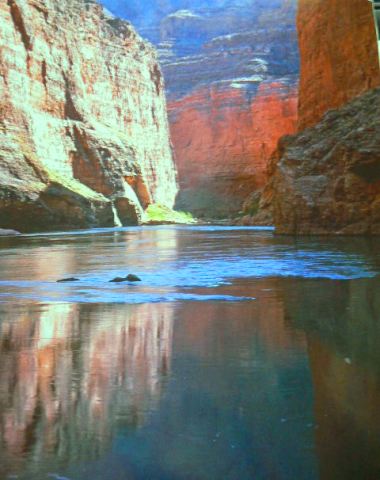
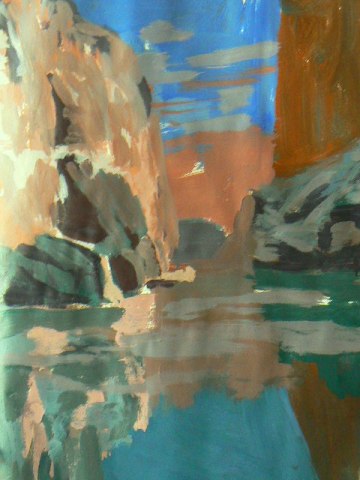
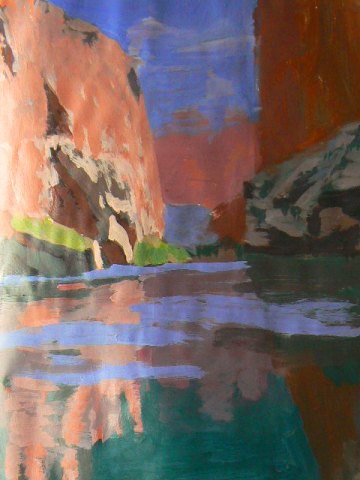
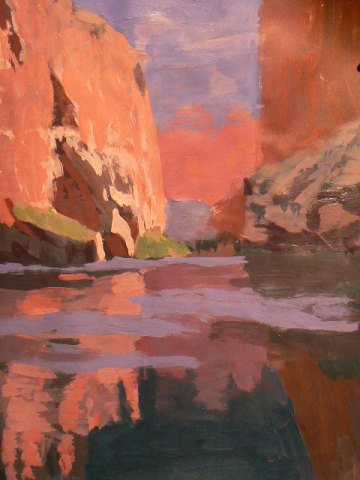
Magazine
page
11" x 14"
sketch stage1
11"
x 14"
sketch stage
2
11"
x 14"
sketch stage
3
January 18, 2007
Courage awakens. I pull out a three-year
old photo I took at Oak Creek outside Sedona, Arizona. It begins. I
work at the diagonals,
rocks become stepping stones that zig zag back into the
picture. By stages 2 and 3 I've taken in too much information, and lost
the focal point. The artist must find an area of interest
and stay jazzed about it, and let all other areas become muted or less
interesting.

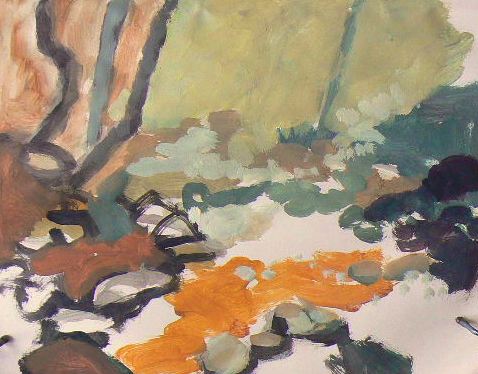
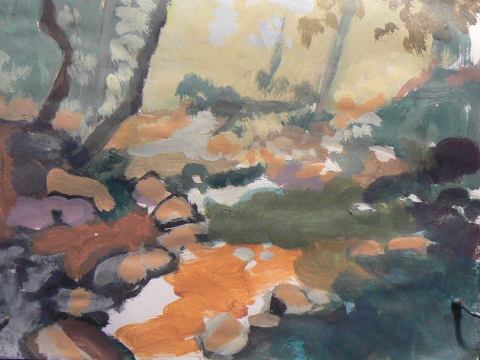
Oak Creek photo of
mine
11" x 14" sketch
stage
1
11"
x 14" sketch
stage 2
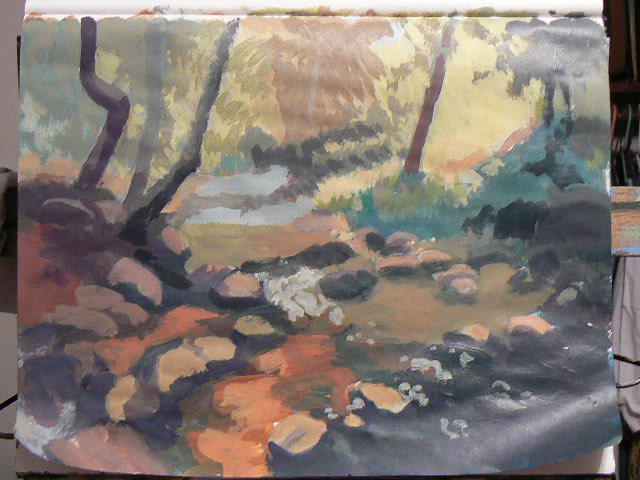
11"
x 14" sketch
stage
3
January 23, 2007
New Problem: After doing the
studies above,
can I create
a color painting
from
a black and white photo,
using the same kind of colors
that Corot used in his work?
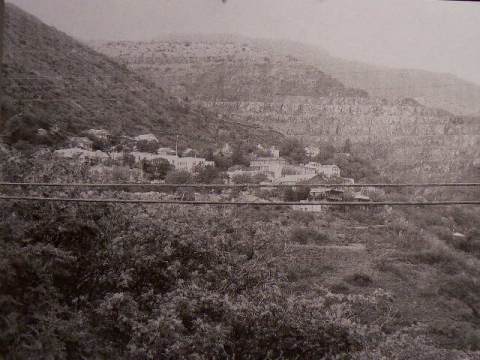
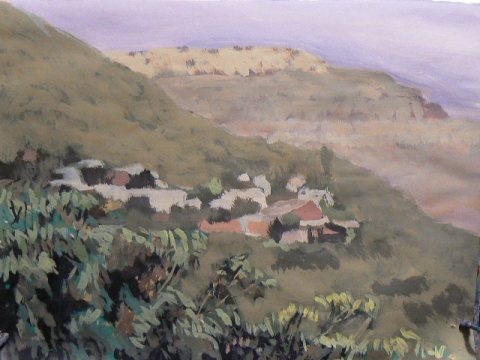
Photo mine taken at Jerome,
AZ
11" x 14"
sketchbook study January 18, 2007
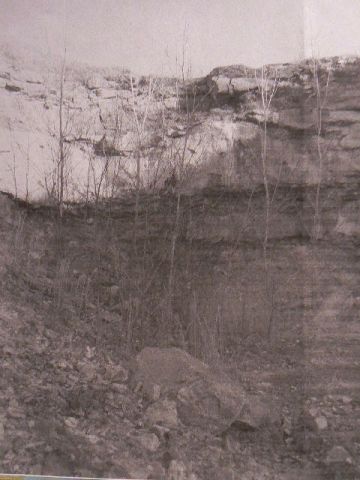
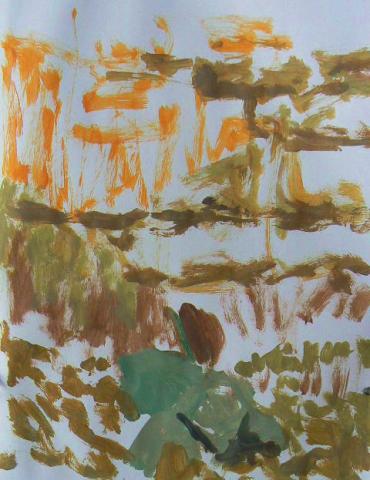
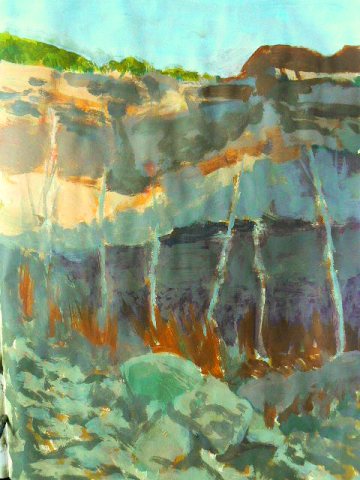
Photo of mine
taken at White Rock
11" x 14"
sketchbook study stage
1
11" x 14" sketchbook study
stage
2
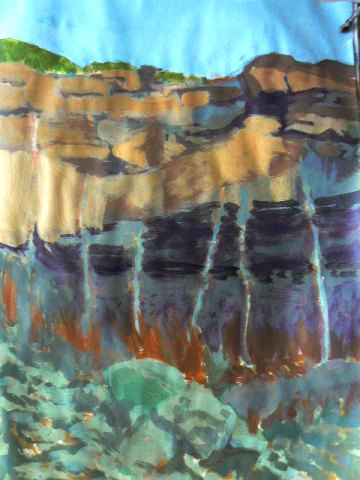

11" x 14" sketchbook study
stage 3
11" x 14" sketchbook study
stage 4 This excites me. The rocks in
January 17, 2006 the foreground are rock-like,
the back wall reads as a
bluff,
the tall trees appear to move
upward from shadow into light.
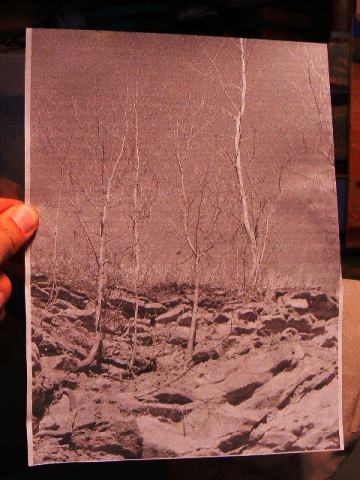
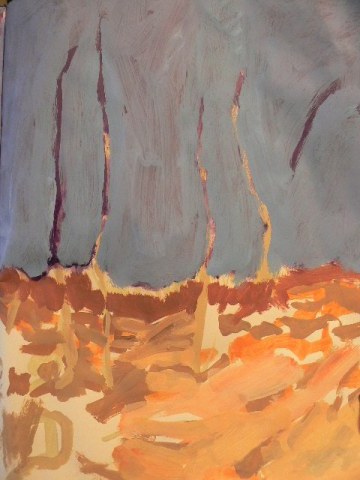
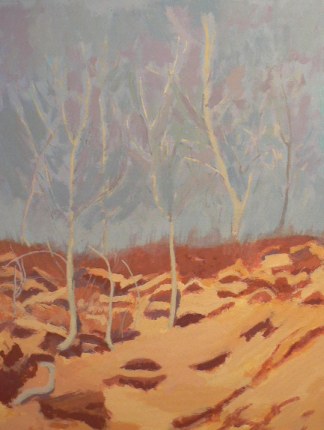
Photo
of mine of
bluff and
trees
11" x 14" sketchbook
study
18" x 24" Bluff Ballet on canvas
Can I make a study
from
monotone
January 17,
2006
February 6, 2006
photo using colors
Corot uses?

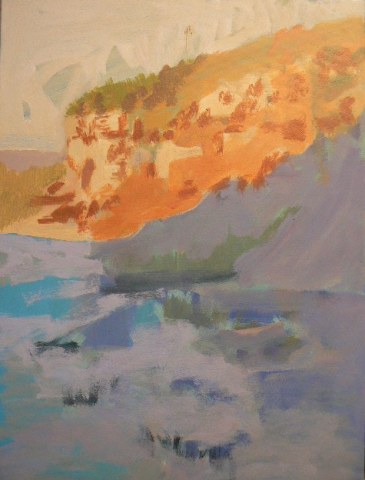
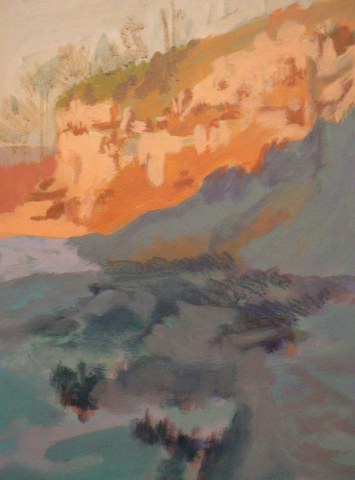
Photo of mine of two-tone quarry wall
18" x 24" canvas in progress stage
1 18" x 24" canvas in progress
stage 2
February 2007
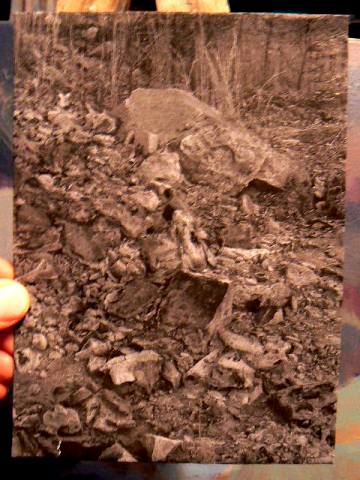

Photo of mine of rocks at White Rock
18"
x 24" canvas in progress stage 1 February 2007
 18" x 24" Bubbling Brook
18" x 24" Bubbling Brook
Acrylic on Canvas
March 2007
Let this be an encouragement to
all. Doing studies is worth your time.
Describing works by Jean-Baptiste-Camille
Corot from my palette on to my sketch
paper has led me to try other subjects.
Confidence comes as one gains
experience and becomes familiar with the materials one works
with.
Try try try, paint paint
paint, practice practice practice, grow grow grow, let courage awaken.
Home
portable
field easel and tripod set
www.artworkessentials.com
Unlock The Tree With A
Pencil
